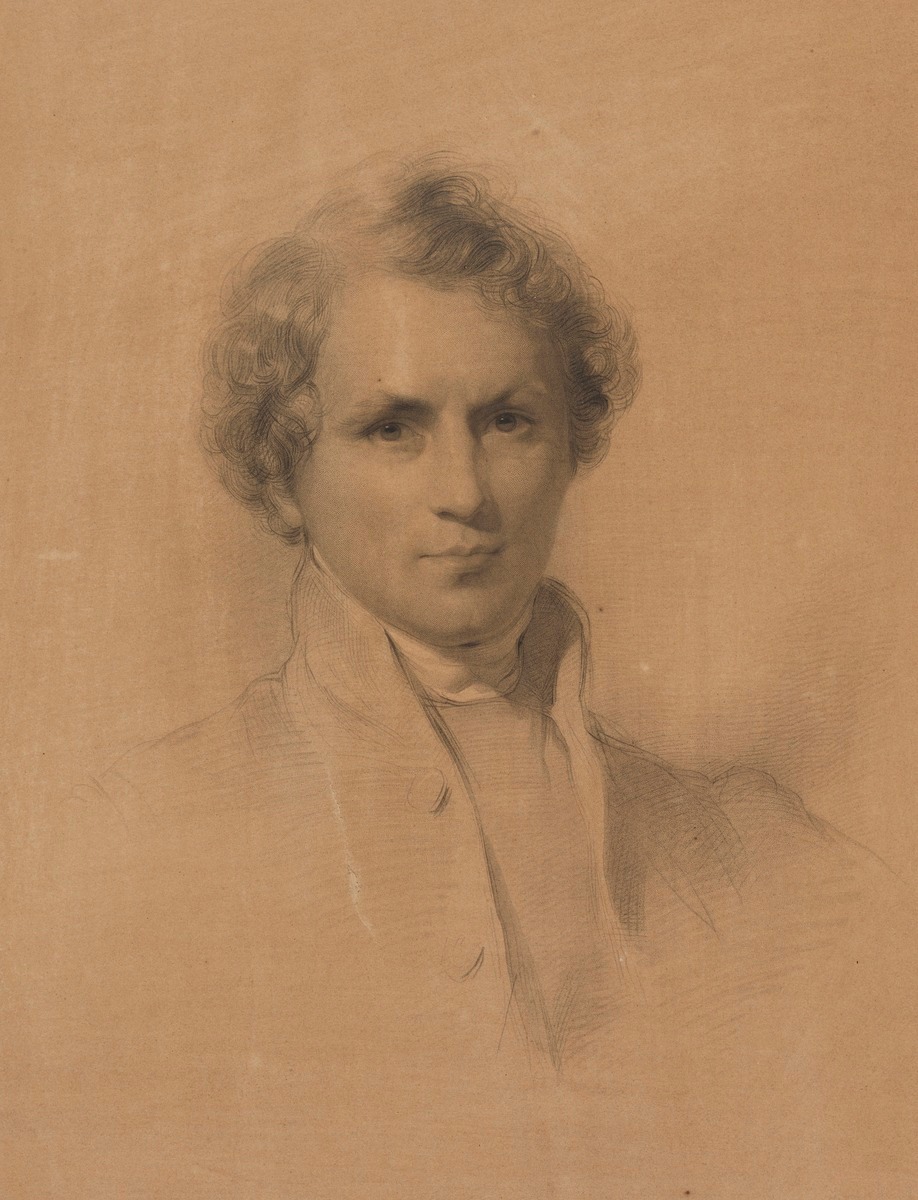Rarely is the portrait of a prelate considered ‘fetching’. However, this is a fitting word to describe the portrait print of Tasmania’s first Anglican Bishop, Francis Russell Nixon (1803– 1879).
A generous crop of dark, gently unfurling curls frames Nixon’s face, clean-shaven and softened to give the impression of youth. Charisma flickers in his dark, sunken eyes. Nixon unabashedly invites viewers to assess these features, confident of their ability to charm.
Nixon’s scrupulous composure reveals little of his true vigour, which enabled him to rise within the Church and leave his mark on colonial Tasmanian society. His talent for delivering spirited public addresses as a young vicar caught the attention of William Howley, Archbishop of Canterbury. Howley proved to be a valuable promoter: he appointed Nixon on the strength of his character as one of the Six Preachers of Canterbury Cathedral and later recommended Nixon for the position of Bishop of Tasmania. Nixon’s consecration took place in Westminster Abbey on 24 August 1842 with appropriate pomp and circumstance.
Shortly before Nixon left England for Van Diemen’s Land in early 1843, he engaged the artist George Richmond to produce his portrait. With its deft treatment of appearance, Richmond’s portrayal of Nixon asserts the charm and gentility of the newly-ordained Bishop – sterling qualities in early Victorian society. Few would guess that Nixon was middle-aged at the time he sat for his portrait. While Nixon’s affability is built up in Richmond’s portrayal, his religious attire remains understated.
By the early 1840s, George Richmond had established himself as a leading society portraitist with an enviable network of friends and acquaintances, including a young John Ruskin. Richmond’s numerous portrait commissions were providing him with a generous income, which was supplemented by the sales of prints made after them. Being a sitter of considerable distinction, Bishop Nixon’s portrait was reproduced by George Brown and H Robinson – the latter a prolific engraver of portraits. The National Portrait Gallery has acquired an example of Brown’s print contained in an elegant Brazilian rosewood frame.
Nixon’s gentlemanly status, so clearly displayed in his portrait, also encompassed his interest in art. The Bishop descended from a fine line of amateurs. His father, Reverend Robert Nixon was a watercolourist and honorary exhibitor with the Royal Academy who encouraged JMW Turner early in the artist’s career. John Nixon, the Bishop’s uncle, conducted wide-ranging sketching tours throughout England and Europe. Similarly, the delicate Tasmanian landscapes that the Bishop produced in watercolour and pencil were records of travel undertaken for recreation as well as in the service of his diocese. He associated with the colonial artist John Skinner Prout and the gentleman of the Hobart Town Sketching Club, at a time when landscape sketching and watercolour fever were ‘raging with extraordinary vehemence among the sons and daughters of Tasmania’.
Bishop Nixon also demonstrated his artistic finesse in the field of photography. His modest output is dominated by portraits, the most wellknown of which are his stereoscopic photographs of Aboriginals on the reserve at Oyster Cove. As far as colonial bishops go, few could boast a portrait as elegant and flattering as Nixon’s. He was a man with surprising talents, whose landscapes and photographs have enriched Tasmania’s artistic heritage.















